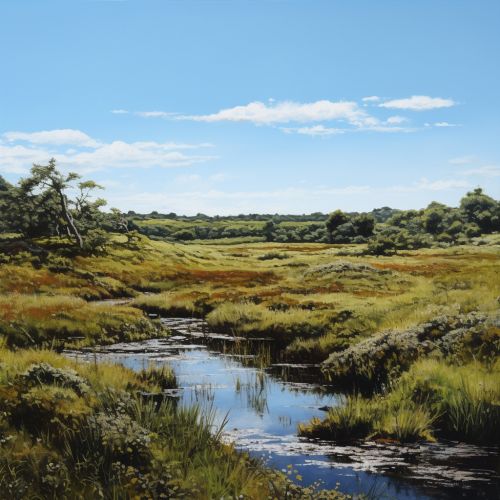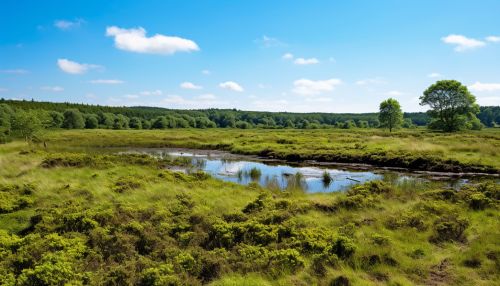Bogs
Introduction
Bogs are a type of wetland characterized by the accumulation of peat, a deposit of dead plant material. They are typically found in cool, northern climates and are often saturated with water, creating a unique and diverse ecosystem. Bogs are known for their acidic and low nutrient conditions, which favor the growth of specialized plant species such as sphagnum moss, carnivorous plants, and dwarf shrubs.


Formation
The formation of bogs is a slow process that takes thousands of years. It begins with the creation of a lake or pond through geological activity or the retreat of glaciers. Over time, plants colonize the water body, gradually filling it in and forming a mat of vegetation on the surface. This mat thickens over time, eventually forming a layer of peat. The water in the bog becomes acidic and low in nutrients due to the decomposition of plant material, creating conditions that favor the growth of bog-specific plant species.
Types of Bogs
There are several types of bogs, each with its unique characteristics and ecological significance.
Raised Bogs
Raised bogs, also known as ombrotrophic bogs, are characterized by a dome-shaped surface that is raised above the surrounding landscape. They receive all their water and nutrients from precipitation, making them highly acidic and low in nutrients. Raised bogs are typically found in cool, northern climates and are home to a variety of specialized plant and animal species.
Valley Bogs
Valley bogs are found in low-lying areas and valleys. They are often fed by streams and groundwater, making them less acidic and more nutrient-rich than raised bogs. Valley bogs support a diverse array of plant and animal life, including many species that are not found in other types of bogs.
Blanket Bogs
Blanket bogs are extensive peatlands that cover large areas of land. They are typically found in cool, wet climates and are often associated with upland areas. Blanket bogs are known for their thick layers of peat and the diverse array of plant and animal species they support.
Ecology
Bogs play a crucial role in the ecosystem. They act as natural water filters, removing pollutants from the water that passes through them. They also store large amounts of carbon, helping to mitigate climate change. Bogs are home to a diverse array of plant and animal species, many of which are adapted to the unique conditions found in these wetlands.
Flora
The flora of bogs is highly specialized and adapted to survive in the acidic, low nutrient conditions. The most dominant plant species in bogs is sphagnum moss, which forms dense mats on the surface of the bog. Other common plant species include carnivorous plants such as sundews and pitcher plants, as well as dwarf shrubs like cranberries and blueberries.
Fauna
The fauna of bogs is equally diverse, with a wide range of species adapted to the unique conditions. Bogs are home to a variety of insects, including many species of dragonflies and damselflies. They also support a range of bird species, including waterfowl and wading birds. Mammals such as moose and beavers are also commonly found in bog habitats.
Conservation
Bogs are under threat from a variety of sources, including drainage for agriculture, peat extraction, and climate change. Conservation efforts are focused on protecting existing bogs, restoring degraded bogs, and promoting sustainable use of peatlands. Bogs are recognized for their ecological importance and are protected under various international conventions and national laws.
